How To Start Learning Guitar Online Today
Discovering the joy of music through the guitar is an exciting journey, and learning online brings the world’s best resources right to your fingertips! In “How To Start Learning Guitar Online Today,” you’ll find everything you need to kickstart your musical adventure. From selecting the right guitar and understanding foundational chords to exploring interactive lessons and joining supportive online communities, this guide simplifies the steps and makes the process enjoyable and accessible. Get ready to strum your first note and dive into the endless possibilities of online guitar learning! Have you ever dreamed of strumming your favorite tunes on a guitar but never knew where to start? You’re not alone! Learning guitar can seem a bit overwhelming at first, especially with so many resources and methods available today. But fear not, because this guide will help you understand how to start learning guitar online today, without getting lost in a sea of options.
Why Learn Guitar Online?
Learning guitar online offers a range of benefits that traditional in-person lessons don’t always provide. First, there’s the convenience factor—you can learn from the comfort of your home, on your own schedule. Plus, online resources are often more affordable and offer a wider variety of teaching styles and materials.
Convenience at Your Fingertips
One of the biggest advantages of learning guitar online is the convenience. You can pick up your guitar at any time, whether it’s early morning or late at night. There’s no need to schedule lessons or commute to a music school. Your classroom is wherever you have an internet connection.
Cost-Effective Learning
Traditional guitar lessons can be pricey, often charging by the hour. Online options usually offer a more budget-friendly way to learn. Many platforms offer free tutorials, and premium courses are generally more affordable compared to hiring a private instructor.
Access to a Variety of Resources
When you learn guitar online, you have access to a vast array of resources—video lessons, tablature, chord diagrams, and interactive tools. This means you can find materials that suit your learning style, whether you’re a visual learner, someone who learns by ear, or someone who likes to read instructional texts.
Choosing the Right Guitar
Before diving into online lessons, you’ll need the right instrument. Choosing the correct guitar can make a huge difference in your learning experience. Let’s break down the essential factors to consider.
Acoustic vs. Electric
Here’s a quick table to help you decide between an acoustic and an electric guitar:
| Feature | Acoustic Guitar | Electric Guitar |
|---|---|---|
| Sound | Natural, woody, often louder | Versatile, can be distorted, amplified |
| Playability | Thicker neck, more challenging for beginners | Generally easier to press strings |
| Portability | No need for additional equipment | Requires an amplifier and possibly pedals |
| Price Range | Generally cheaper for beginners | Can be more expensive with accessories |
Guitar Size and Fit
It’s important to choose a guitar that suits your body size and comfort. For younger players or people with smaller hands, consider a 3/4 size guitar. Full-size guitars are suitable for most adults. Always test the guitar if possible to ensure it feels comfortable to play.
Budget Considerations
As a beginner, it’s wise to start with a budget-friendly option. You don’t need to splurge on a high-end guitar. Many reputable brands offer quality starter guitars that won’t break the bank.
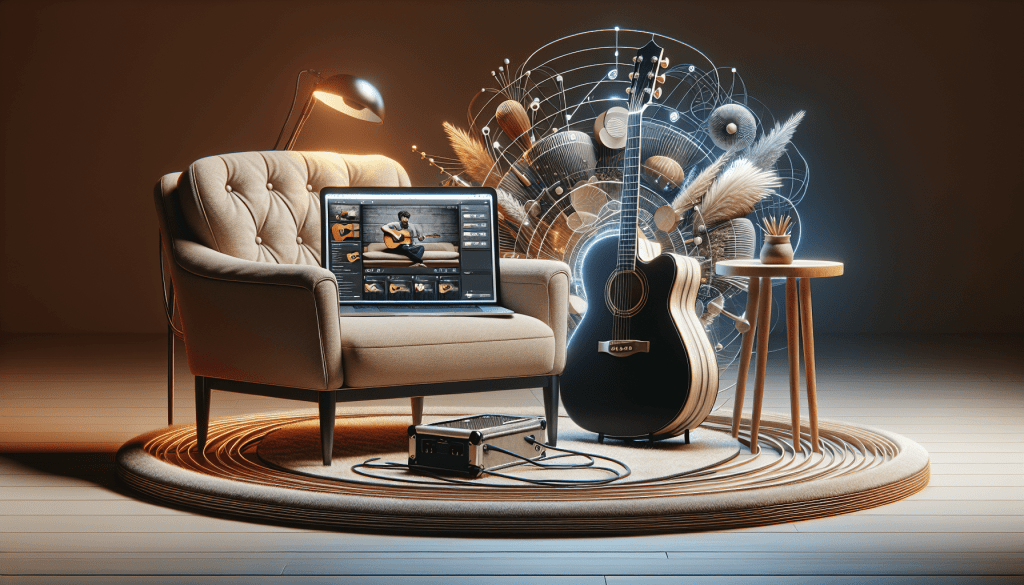
Setting Up Your Learning Environment
Your learning environment can greatly affect your progress. Ensure you have a quiet, comfortable space dedicated to your practice sessions. Good lighting, a comfortable chair, and a music stand can all make a big difference.
Equipment You Might Need
While the guitar is the star of the show, several other tools can enhance your learning experience:
- Tuner: Keeping your guitar in tune is essential.
- Metronome: Helps you keep time and improve your rhythm.
- Picks: Different thicknesses can affect your playing style.
- Capo: Allows you to change the key of the song easily.
- Guitar Strap: Useful if you plan to play standing up.
Setting Up Your Practice Routine
Consistency is key when learning any new skill. Set aside a specific time each day or week for guitar practice. Even just 15-30 minutes a day can lead to significant progress over time.
Finding the Best Online Resources
The internet is brimming with guitar learning resources. However, finding the right ones can be like searching for a needle in a haystack. Let’s look at some popular platforms and what they offer.
YouTube Channels
YouTube is a treasure trove for free guitar lessons. Here are a few highly recommended channels:
- JustinGuitar: Comprehensive lessons for beginners to advanced players.
- Andy Guitar: Focuses on easy songs for beginners.
- Fender Play: Offers a structured approach to learning guitar.
Dedicated Websites and Apps
Several websites and apps are specifically designed for learning guitar. Here are a few notable mentions:
- Yousician: An app that offers an interactive learning experience, providing instant feedback on your playing.
- Guitar Tricks: A popular platform that offers a wide range of lessons for all skill levels.
- JamPlay: Known for its diverse teaching styles and extensive lesson library.
Online Communities
Joining online communities can provide additional support and motivation. Websites like Reddit, Ultimate Guitar, and various Facebook groups offer a platform where you can ask questions, share progress, and get tips from other guitar enthusiasts.
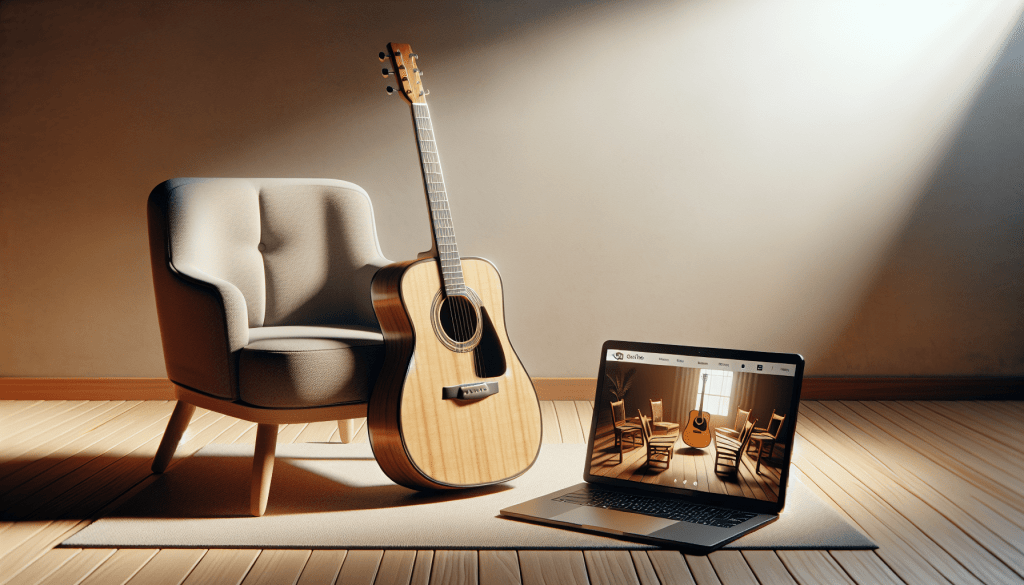
What to Learn First
Starting with the basics is crucial to building a strong foundation. Here are the key areas you’ll want to focus on initially.
Basic Chords
One of the first things you’ll learn is how to play basic chords. These are essential because they form the backbone of most songs. Start with open chords like G, C, D, E, and A.
Simple Strumming Patterns
Once you have a grasp on your basic chords, you can begin practicing simple strumming patterns. Start with downstrokes only, then mix in upstrokes to add complexity.
Tuning Your Guitar
Keeping your guitar in tune is essential. Learn how to use a tuner, and eventually, you’ll be able to tune your guitar by ear.
Reading Tablature
Guitar tablature, or tabs, are like sheet music specifically for guitar. Understanding how to read tabs will open up a world of music you can play.
Basic Scales
Learning basic scales, such as the pentatonic scale, will help you understand the fretboard better and allow you to start experimenting with simple solos.
Practice Tips
Effective practice is about quality, not necessarily quantity. Here are some tips to help you get the most out of your practice sessions.
Set Clear Goals
Having clear, attainable goals will keep you motivated and focused. Whether it’s learning a new song, mastering a tricky chord change, or improving your strumming, having something specific to aim for will make your practice time more effective.
Break It Down
When faced with a challenging piece or technique, break it down into smaller parts. Focus on one section at a time until you feel comfortable, then gradually piece everything together.
Use a Metronome
A metronome is a handy tool for keeping time, especially when practicing new strumming patterns or scales. Start slow and gradually increase the tempo as you become more proficient.
Record Yourself
Recording your practice sessions can provide valuable feedback. You might notice areas where you need improvement that you wouldn’t have caught otherwise. Plus, it’s a great way to track your progress over time.
Stay Patient and Positive
Learning guitar is a journey, and it’s normal to hit occasional plateaus. Stay patient, maintain a positive attitude, and celebrate your progress, no matter how small it might seem.
Advanced Learning
Once you’ve got the basics down, you can start exploring more advanced techniques and styles. Here are some areas to consider as you continue your guitar journey.
Fingerstyle Guitar
Fingerstyle involves plucking the strings directly with your fingertips, rather than using a pick. This technique opens up a whole new world of musical expression and can be particularly beautiful and intricate.
Barre Chords
Barre chords are more challenging than open chords but are essential for playing a wide range of songs. They involve pressing down multiple strings with one finger, creating a “bar” across the fretboard.
Soloing and Improvisation
Learn scales and how they fit into different keys to start improvising. Soloing is a skill that takes time to develop, but it can be incredibly rewarding and fun.
Music Theory
Understanding the basics of music theory can deepen your knowledge and appreciation of music. Concepts like scales, intervals, and chord construction can vastly improve your playing and give you more tools for creating your own music.
Maintaining Your Guitar
Your instrument is an investment, so taking care of it is essential. Here are some tips for maintaining your guitar.
Regular Cleaning
Dust can accumulate on your guitar, affecting its sound and appearance. Wipe down your instrument regularly with a microfiber cloth, and use specialized guitar cleaners and polishes to keep it in top shape.
String Maintenance
Strings wear out over time and can break if not replaced regularly. Depending on how often you play, you might need to change your strings every few months. Clean your strings after each session to extend their life.
Proper Storage
Store your guitar in a case to protect it from dust, humidity, and temperature changes. If possible, keep it in a climate-controlled environment to prevent warping and other damage.
Regular Inspections
Check your guitar regularly for signs of wear or damage. Look for issues like tuning instability, fret wear, and cracks in the wood. Regular inspections can catch problems early, potentially saving you from costly repairs.
Staying Motivated
Keeping yourself motivated is crucial for long-term success. Here are some tips to stay inspired and keep your enthusiasm high.
Set Milestones
Setting milestones can make your progress more tangible and rewarding. Celebrate each achievement, no matter how small—whether it’s mastering a new chord, playing your first song, or hitting a practice consistency streak.
Join a Community
Being part of a guitar community can provide a sense of belonging and additional motivation. The encouragement and feedback from fellow learners can be incredibly uplifting.
Explore Different Genres
Don’t limit yourself to one style or genre. Exploring various types of music can keep your practice sessions fresh and exciting. Whether it’s rock, blues, jazz, or classical, different genres offer unique challenges and learning opportunities.
Take Breaks
It’s essential to give yourself time to rest. Taking a break can prevent burnout and give you a fresh perspective when you return to practice.
Useful Online Resources
To help you in your guitar-learning journey, here are some valuable online resources worth checking out:
Websites
| Website | Description |
|---|---|
| Ultimate Guitar | One of the largest collections of guitar tabs and chords online. |
| JustinGuitar | Offers free lessons for all skill levels, along with paid courses. |
| Songsterr | Interactive tabs and chord sheets, with playback features. |
Apps
| App | Description |
|---|---|
| Yousician | Interactive app providing feedback on your playing. |
| Fender Play | Step-by-step lessons with a structured approach. |
| GuitarTuna | Highly rated tuner app with additional practice tools. |
Social Media Groups
| Platform | Group |
|---|---|
| Guitar Learning Community, Beginner Guitar Lessons | |
| r/guitar, r/guitarlessons | |
| Discord | Various guitar learning and practice servers |
Conclusion
Starting your journey to learn guitar online can be one of the most rewarding decisions you’ll ever make. With the right tools, resources, and mindset, the process can be enjoyable and fulfilling. Remember to stay patient, be consistent in your practice, and most importantly, have fun along the way. The world of music awaits, so pick up that guitar and start strumming today!

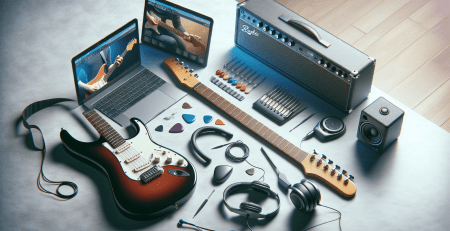
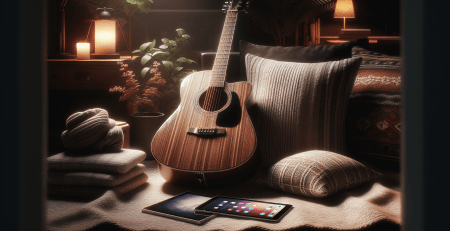
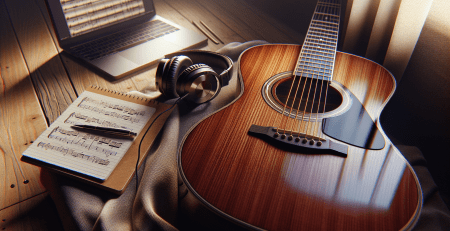
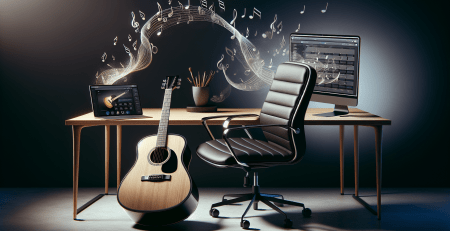

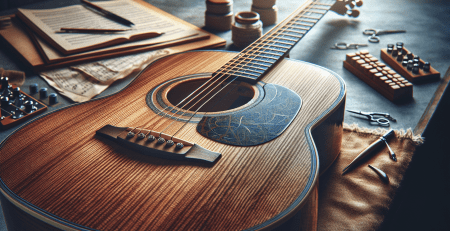
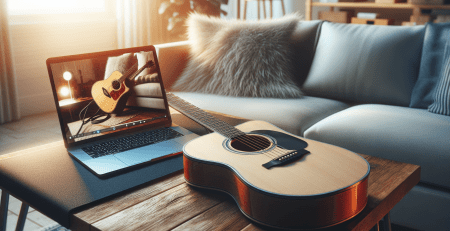
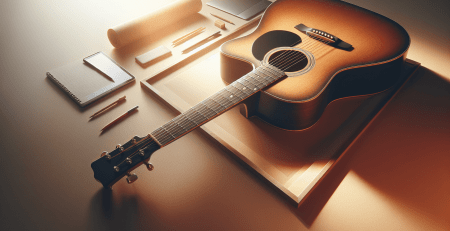

Leave a Reply